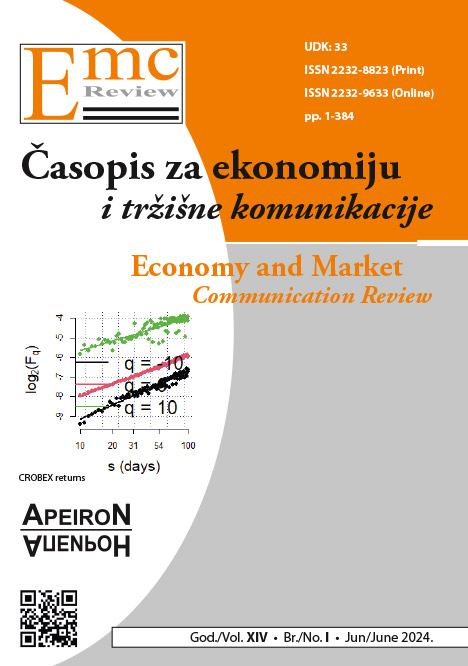MODELING OF BREAKING POINT ELEMENTS IN THE PROGRAMMING FUNCTION OF OPTIMAL BUSINESS STRATEGY EXAMPLE OF ERGEL “VUČIJAK” PRNJAVOR
DOI:
https://doi.org/10.7251/EMC2401197LKeywords:
modeling, turning wheel, optimal strategyAbstract
The company, as a system, was founded with the objective of transforming input sizes into changed output sizes, where the primary task of output sizes is precisely to meet the appropriate, market-expressed needs, desires, preferences, and expectations of consumers with their unique characteristics. Throughout their existence, business systems must balance the ratio of inputs and outputs in the reproduction process through integrated management efforts, aiming to achieve economy, productivity, and profitability. This balance is essential to ensure that the basic principles are an integral part of their business. Each company has a specific concept regarding its way of working, organization, scope, and structure of activities. However, all business systems express and measure the quality of their business by comparing the ratio of business results and investments in their realization and reproduction. The problem facing many business systems lies in overloading, often economically unjustified, business costs, which prevents adequate market positioning. One crucial factor affecting a company’s competitive advantage is the price of its finished products. The final price of a product is controlled by the company, depending on its desired profit margin, and can be influenced by reducing the price of the finished product at the expense of potential profit. Another way for a company to influence the price of its finished product is through effective cost management. Competitive advantage requires an optimal balance between results and investments in the business system, achieved by maximizing output value through revenues and/or minimizing input value through costs. Every company aims to produce a unit of product at the lowest possible cost or at least not more expensive than the competition. Therefore, company management is expected and required to carefully monitor cost behavior and incorporate this knowledge into its business decisions. Lack of knowledge about cost behavior can lead to serious problems for a company. Understanding cost behavior and flow can enable company management to create a successful business that not only maintains its existing state but also develops and grows. The goals of this paper are to highlight the importance of managing business costs, provide an analytical framework for their rationalization, and include the obtained results in determining the optimal volume of business activity for manufacturing companies on a concrete example. This work is based on scientific knowledge about costs and aims to demonstrate models of different business alternatives and include information about costs in the decision-making process.
